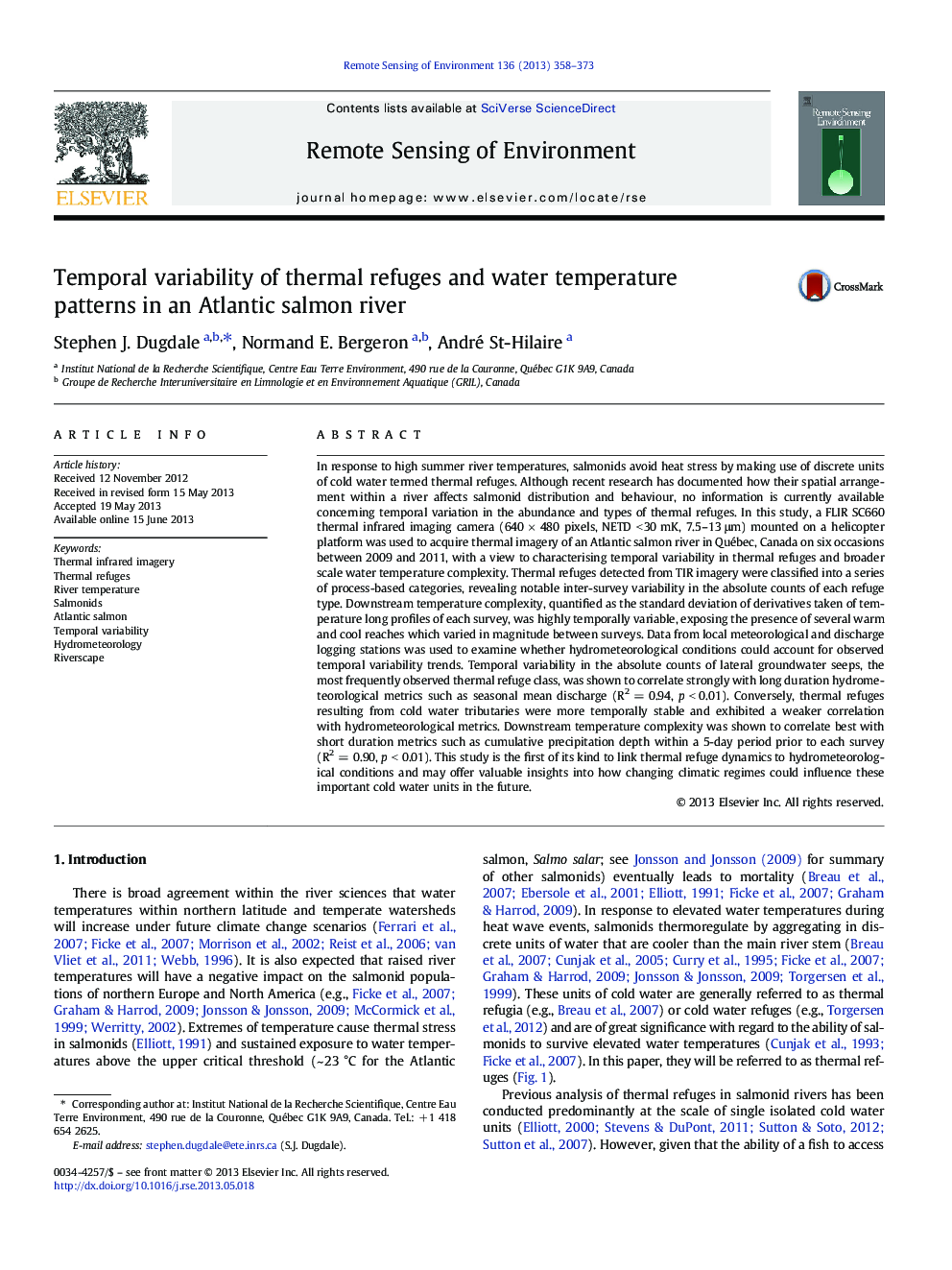| کد مقاله | کد نشریه | سال انتشار | مقاله انگلیسی | نسخه تمام متن |
|---|---|---|---|---|
| 6347430 | 1621264 | 2013 | 16 صفحه PDF | دانلود رایگان |
عنوان انگلیسی مقاله ISI
Temporal variability of thermal refuges and water temperature patterns in an Atlantic salmon river
ترجمه فارسی عنوان
تغییرات زمانی در مخازن حرارتی و الگوهای دمای آب در یک رودخانه ی آتلانتیس
دانلود مقاله + سفارش ترجمه
دانلود مقاله ISI انگلیسی
رایگان برای ایرانیان
کلمات کلیدی
موضوعات مرتبط
مهندسی و علوم پایه
علوم زمین و سیارات
کامپیوتر در علوم زمین
چکیده انگلیسی
In response to high summer river temperatures, salmonids avoid heat stress by making use of discrete units of cold water termed thermal refuges. Although recent research has documented how their spatial arrangement within a river affects salmonid distribution and behaviour, no information is currently available concerning temporal variation in the abundance and types of thermal refuges. In this study, a FLIR SC660 thermal infrared imaging camera (640 Ã 480 pixels, NETD < 30 mK, 7.5-13 μm) mounted on a helicopter platform was used to acquire thermal imagery of an Atlantic salmon river in Québec, Canada on six occasions between 2009 and 2011, with a view to characterising temporal variability in thermal refuges and broader scale water temperature complexity. Thermal refuges detected from TIR imagery were classified into a series of process-based categories, revealing notable inter-survey variability in the absolute counts of each refuge type. Downstream temperature complexity, quantified as the standard deviation of derivatives taken of temperature long profiles of each survey, was highly temporally variable, exposing the presence of several warm and cool reaches which varied in magnitude between surveys. Data from local meteorological and discharge logging stations was used to examine whether hydrometeorological conditions could account for observed temporal variability trends. Temporal variability in the absolute counts of lateral groundwater seeps, the most frequently observed thermal refuge class, was shown to correlate strongly with long duration hydrometeorological metrics such as seasonal mean discharge (R2 = 0.94, p < 0.01). Conversely, thermal refuges resulting from cold water tributaries were more temporally stable and exhibited a weaker correlation with hydrometeorological metrics. Downstream temperature complexity was shown to correlate best with short duration metrics such as cumulative precipitation depth within a 5-day period prior to each survey (R2 = 0.90, p < 0.01). This study is the first of its kind to link thermal refuge dynamics to hydrometeorological conditions and may offer valuable insights into how changing climatic regimes could influence these important cold water units in the future.
ناشر
Database: Elsevier - ScienceDirect (ساینس دایرکت)
Journal: Remote Sensing of Environment - Volume 136, September 2013, Pages 358-373
Journal: Remote Sensing of Environment - Volume 136, September 2013, Pages 358-373
نویسندگان
Stephen J. Dugdale, Normand E. Bergeron, André St-Hilaire,
